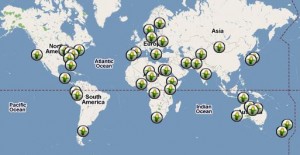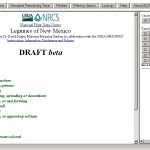Kris’s Archaeology Blog at About.com:Archaeology has a challenging quiz about domestication. I got 15/20. You?
Happy Birthday, Prof. Karl Hammer
And sorry for missing it when it actually came, back in February!
He fundamentally contributed to our present knowledge of cultivated plants’ biodiversity in Cuba, Eastern Europe, Italy, Libya, Oman and Korea. As an enthusiastic researcher heading the Gatersleben Genebank and later heading the Agrobiodiversity Department of Kassel University in Witzenhausen, his scientific work covered a tremendously wide field of research in plant genetic resources, ranging from pollination ecology and taxonomy (e.g. of Aegilops, Agrostemma, Brassica, Datura, Secale, Triticum) to questions of plant domestication, genetic erosion and evaluation, maintenance and utilization of the entire spectrum of plant genetic resources, including underutilized and neglected crops.
Many happy returns! Enjoy your retirement!
Identifying plants online
The USDA’s Natural Resources Conservation Service has online (and, indeed, downloadable too), interactive, polyclave identification keys for American grasses and legumes, by state. It’s unclear to me from the introduction whether these cover all grasses in each state, or only the ones which occur in wetlands. In any case, they are for testing purposes only at this stage. But the multi-entry keys are much easier and efficient to use than conventional dichotomous keys. And there are a lot of crop wild relatives included (e.g. see Phaseolus in New Mexico in the screenshot thumbnail below). I don’t think the keys have been build using LUCID (at least I don’t see any reference to it), which seems a bit like re-inventing the wheel, but anyway, better keys are always worth having.
Nibbles: Coca to cacao, BXV, Chinese gardening, Forest conservation, Amazon, Soil bacteria, Prairie, Genetics, Wildcats, Milk product
- “No a la droga, si al caucho y al cacao.”
- Spotting banana Xanthomonas wilt (BXW) with biochemical tests.
- The tree that owns itself. Take that, lawyers!
- “The old Chinese gardener in ragged blue coat and trousers with a wispy white beard who potters around smoking one of these long pipes with a tiny bowl — and a mongol cap, periodically performing elaborate grafting techniques on the plum tree.”
- Mexican coffee growers protect surrounding forest. Nepal forest community moving in similar direction?
- Mapping the competition between soy and forest in Brazil.
- Weird agrobiodiversity corner: pseudomonad bacteria help maize take up nutrients.
- Using herbicides to help prairie establishment (including sunflower wild relative).
- Stop press: “Agricultural genetics is one of the easier parts of the solution.”
- “…wildcats preferred resting sites in shelter structures near forest edges.”
- Video on Greek yogurt. Jeremy comments: “I’m going back to Crete.”
The Human Toll of Climate Change mapped
Science Progress has a great interactive map on the effects of climate change on different aspects of human life, including health and agriculture.

Clicking on the pin takes you to the original source of the information. And you can add your own pins. This is just the kind of model that we could use in developing our platform for an early warning system for genetic erosion.
